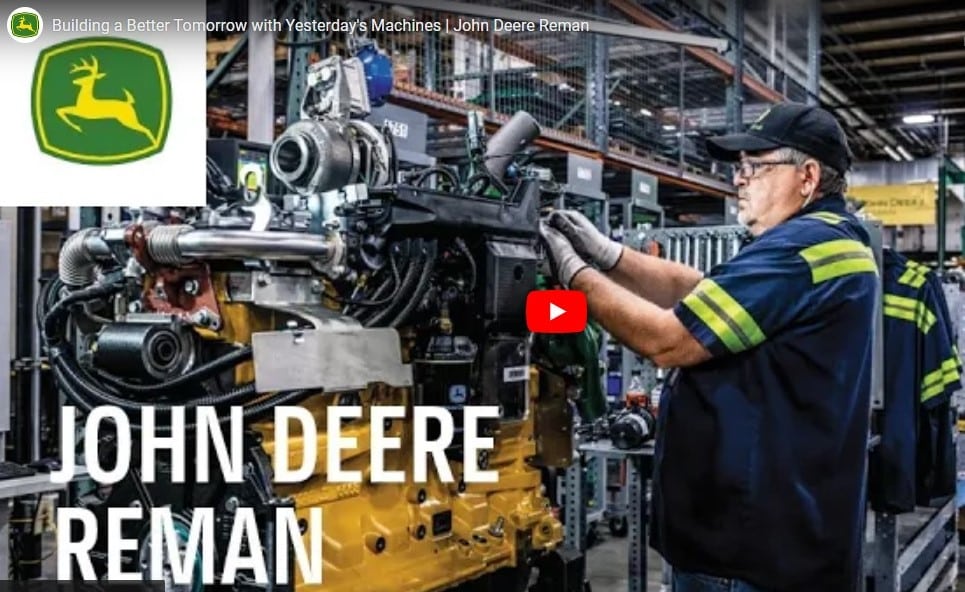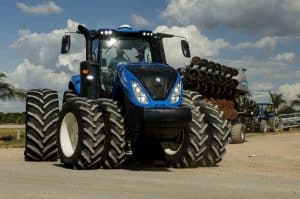Professional manufacturers of ag machinery like John Deere, transform old components to like-new condition. Under the “Reman” name they supply reborn, not rebuilt components, thus saving customers time and money, while enhancing sustainability. The story on how John Deere puts Reman into practice.
John Deere customers are in the cab before most of the world is out of bed. That’s what happens when you’ve got fields to plant, earth to move, and infrastructure to build. All they ask for in return is a machine that works as hard as they do.
But even the most rugged equipment can wear down after years of work. A few decades ago, when vital components went bad, they’d be sold for parts or sent to the junkyard. Today, we see immense value in giving old products new life. And at John Deere Reman in Springfield, Missouri, restored parts and components deliver like-new performance at affordable prices, with reduced environmental impact.
“The sheer number of castings such as housings, blocks, cylinder heads, and crankshafts that we save and reclaim every day is incredible,” said Navaid Ahmed, manager, quality & engineering, John Deere Reman. “Reman is definitely a unique part of our company, and seeing broken parts transform into components that are as good as new makes my work very interesting.”
A remanufactured component doesn’t mean rebuilt or repaired. At John Deere, advanced reclaim techniques such as milling, lapping, laser cladding, and thermal spray bring components to original equipment manufacture (OEM) specifications, or better.
“Remanufacturing, unlike traditional manufacturing methods, adds a whole new layer of processing, one that unlocks value for our customers and dealers,” explained Brooklynn Soto, core procurement and planning specialist, John Deere Reman. “It also provides a much cleaner alternative for the environment. I’m proud to help take something old, worn, and non-working and turn it into a well-oiled, torque generating, high-performing machine.”
In addition, remanufacturing enables Deere to deliver better outcomes while using fewer resources.
“Reman is unique in that it’s a win across the board,” said Troy Shannon, senior engineer, Sustainability Solutions, John Deere Reman. “It offers a very high-quality service part for customers at a price point that’s less than new. And remanufactured products are more environmentally friendly to produce than new parts.”
A fulfilling career
For Ahmed, a career in remanufacturing is rewarding because he directly helps customers achieve success. “My work gives me an opportunity to ensure our customers and dealers get the reliable Deere products they demand,” he said. “Reman is a great place for engineers and new recruits to learn about design and manufacturing. You learn about the product lifecycle, see how component designs have progressed throughout the years, and you’re constantly surprised when you see beat-up engines and transmissions disassembled and built as good as new.”
Charlott Schwartz-Doyle, quality engineer, believes remanufacturing is all about helping customers run more efficiently, productively, and profitably.
“I’m impressed by the commitment of our skilled workforce to bring high quality products to customers,” she said. “Remember, remanufactured products are required to meet all the expectations of a brand-new product. That’s why maintaining performance standards in the remanufacturing processes is key to the success of our business.”
“Deere is delivering both economic and sustainable value to customers,” Schwartz-Doyle said. “For example, end-of-life products and components are reintroduced to the economy through remanufacturing of like-new products, which creates jobs and saves customers money. Plus, there’s the added benefit of reducing the impact manufacturing has on the planet.”


![RightSpot Ad Template Digital-1400×190-px[76] Ag Leader RightSpot](https://world-agritech.com/wp-content/uploads/elementor/thumbs/RightSpot-Ad-Template-Digital-1400x190-px76-r316mmc0hgoob9qxmklllnnbxta1nlj7t2vjkoyeek.png)







